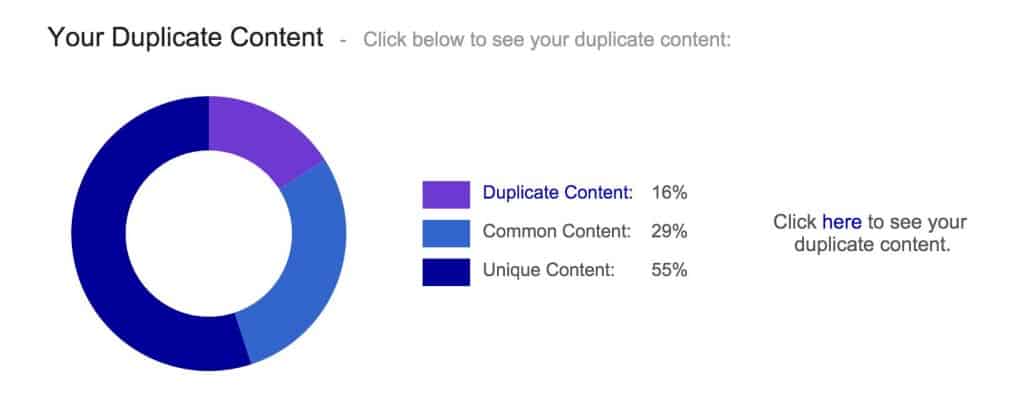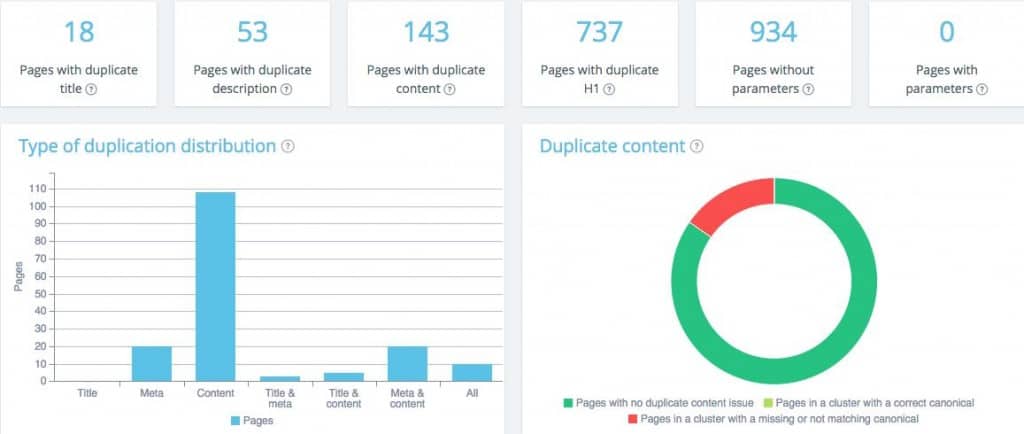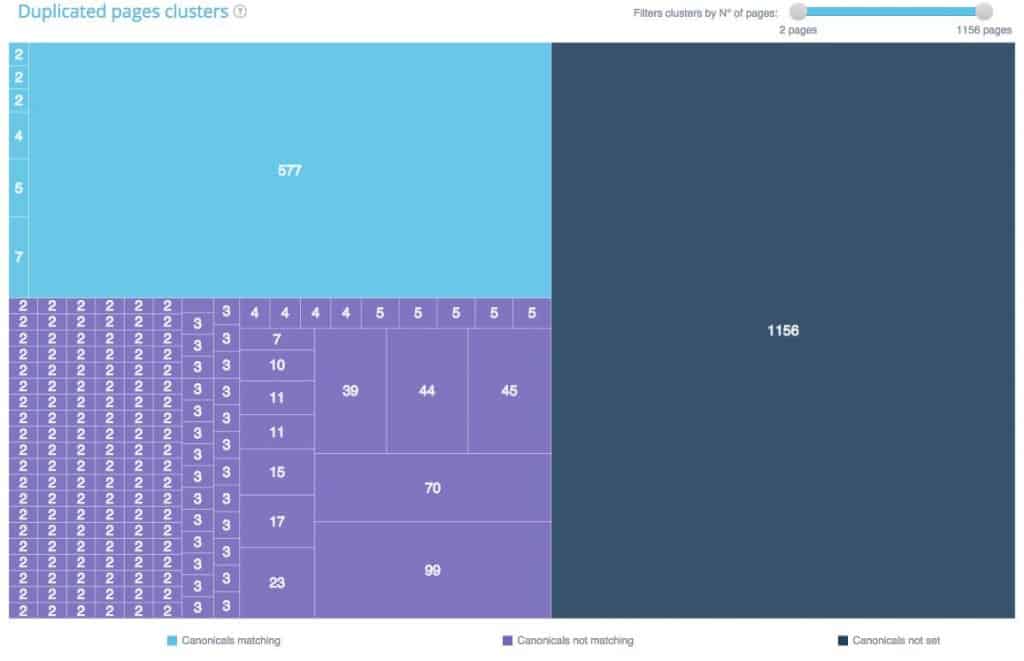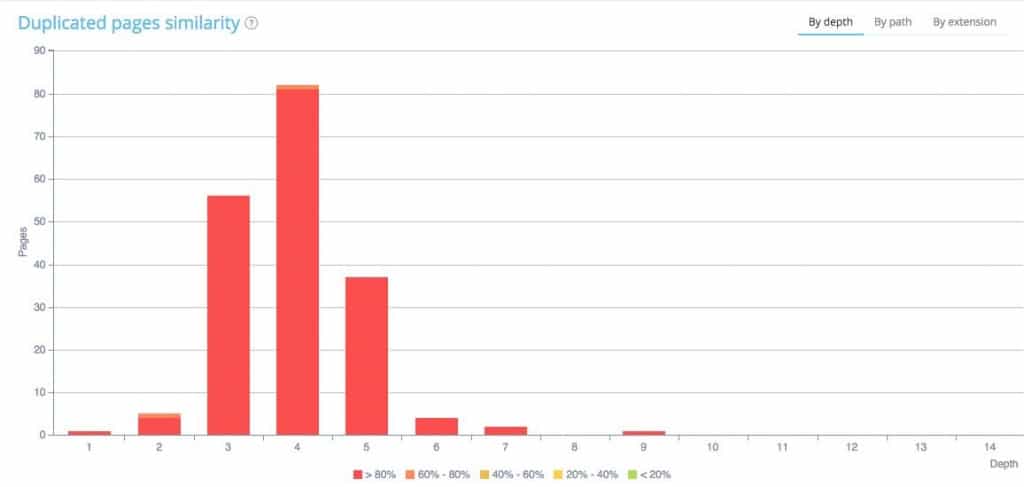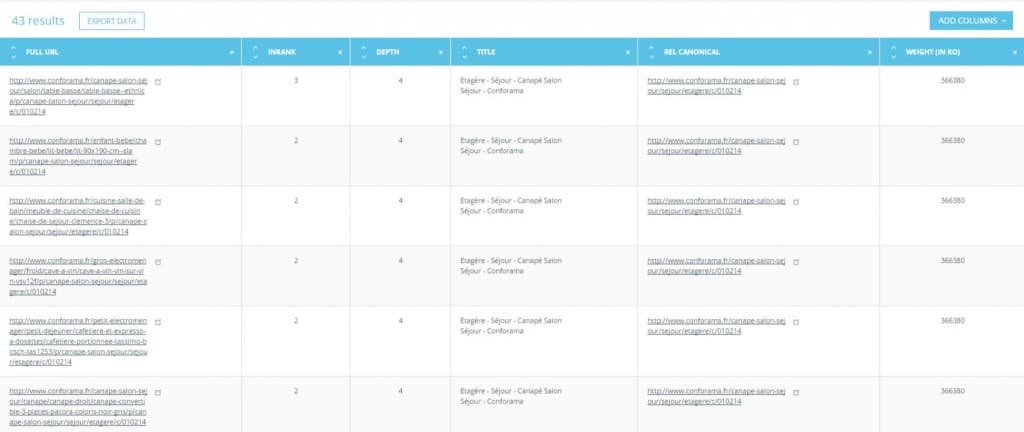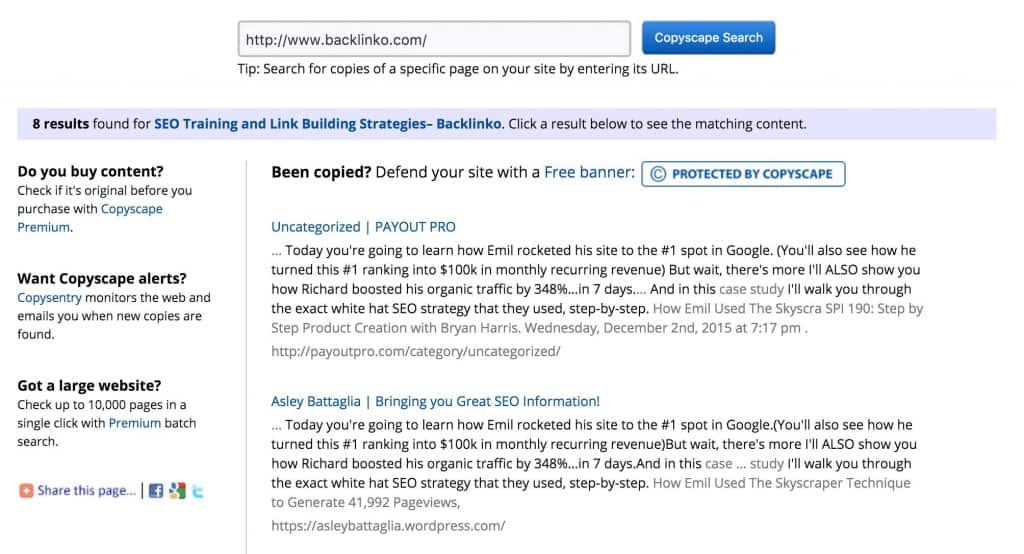Like marketing, journalism is about people. Consumers of editorial and advertorial matter, in all forms, are still consumers. The person who hates fast food loves Netflix and drives a Mazda will still be receptive to information about all three, no matter if that information is paid for, investigated, or generated naturally by events.
The genesis of new ideas for a new customer in brainstorming can be as exciting and vibrant as the morning news meeting in a busy newspaper. Decisions will be made, alternative ideas pursued or discarded and trends and matters of interest followed and analyzed.
But now, in the digital 21st century, we can pinpoint our customers more. We know their personas, attitudes, likes, and dislikes. We also know how a consumer found their way to a website or social media feed, from where, and when.
Alertness
Any veteran hack worth their salt will be experts at ‘off-diary’ stories, which essentially break into two categories.
The first is a skill which some possess bringing tales into work to investigate what they’ve noticed on their way through towns, such as the closed shop, the new spate of fly-tipping, the posters for a new band with a disabled singer, or the Lithuanian club night that’s just started. And so on. Banishing timidity and replacing it with curiosity, will uncover rich seams of human life
The second category is the long-term investigation or campaign, on which those in journalism might only spend 20 minutes per day working, but should eventually yield great results. This might take weeks, months, or even years. For example, animal lovers may remember the dog’s home in Manchester which was destroyed last September.
Donations poured in quickly for a rebuild, but the Manchester Evening News took the baton and ran with it. The result is this – a successful, £1.4m facility. One might imagine that in the background journos were looking for dog lovers, making regular phone calls to the office, and essentially keeping the story ticking over until its happy conclusion.
The source for a marketing or journalism brainstormer might be the front of a screen. Tools such as Buzzsumo, Hubspot’s blog topic generator, and more will generate ideas and follow trends. But interest in new topics and perhaps more tellingly what other people are investigating as new topics will uncover rich seams of human life and interest: banish timidity and replace it with curiosity.
Crunching Data – and the Stories Around It
Imagine you’ve arrived at some interesting figures concerning thefts in a given area. For example, you’ve discovered the number of burglaries in a given city around the Christmas period.
This could be reported in bare facts, in list form. One could simply present a pie chart of data, dish up a quote from a local cop, and still throw together a strong lead story warning people to be vigilant. But think of your readers. Who will be interested in the story? Unless the figures of the items taken are outrageous, who will care? Is there a way of grabbing attention?
Let’s take it further. What if you could push to find out a little more? What if you could find out the time's items were stolen? Let's say, rather than simply finding out that £300 of PlayStation games were nabbed, you could find out the titles?
Or the makes of aftershave or bicycles that were taken? Why not speak to a victim and add some emotion to the story? What happens to stolen toys? Do police ever reunite lost items with their owners?
Immediately, we’ve opened the story from a run-of-the-mill straight news piece to an angled, nuanced piece that could interest anyone from a gamer to a gran, and a mum and dad to, yes, a gang of criminals.
Brands and content strategists should know their personas, and should dig into them and what works. Blogs, infographics, videos– there are many ways to do a job, both short-term and long-tail.
Deadlines
Journalism deadlines have taken on a new meaning in the 21st century. Not all newspapers are even going with them anymore. However, that urge to complete jobs to a schedule, construct a diary of events throughout the day, week or year, and to think ahead, is a habit that never leaves the journalism writers.
A marketer can latch on and explore a journalist’s ability to analyze different events in a diary, to know what’s happening tomorrow and in six months’ time, and to keep an eye on trends, fads, public figures, and social media.
Therefore, even in the early stages of the brainstorming, a team might be planning exactly when to pitch that, and when to create this, to create maximum disruption and interest.
Widening the Net
The dissection of information on the internet is a bizarre paradox. We’ve never had access to so many viewpoints and sources of knowledge. We can find those we like and impose settings to aggregate and curate them for our tastes.
Journalism isn’t quite like that. The earnest hack needs to know lots about lots that they have no interest in, which could include council protocol, the rules of crown green bowling, and rare diseases.
Not only do you need to know about these diverse parts of life and the stories that might flow from them, but you need to think about them from different angles, explore them, react to them and plot their futures. In a news meeting an editor will grill you and soon pick holes, as well as offer their ideas—will this piece fit at the start or end of the paper, or online only? What’s the tone?
In brainstorming, ideas bounce around. You may be the brainstormer who turns up with their notepad of ideas, timidly reading them out and hoping for approval.
However, there’s usually someone who arrives at the meeting with few or even no ideas but is brilliant at asking questions concerning other people’s ideas. These are the ones who see the bigger picture and the big bang that might go with your idea, mentally planning avenues and angles to explore.
Different Approaches
Do you remember Lord Sewel and his alleged transgressions with drugs and prostitutes? Believe it or not, The Sun on Sunday’s footage allegedly showing the peer engaged in drug-related offenses was only made public at the end of July, but somehow it seems much longer ago.
There are some tough journalists in this world, people who want to get a story, and to hell with its subjects. The methodology involved in bagging such a story can be a long, drawn-out affair. To find out more read either ‘Hack’ by Graham Johnson or ‘Tabloid secrets’ by Neville Thurlbeck, both former tabloid hacks.
In short, these methods probably involve procuring the story after a tip-off, talking to and then paying off the ‘participants’, setting up an elaborate filming system, putting the whole mix together, and presenting it to lawyers.
Some were unconvinced that Sewel’s private activities were even worthy of public interest. Compare and contrast this with one of the greatest journalistic exposures of our time, The Telegraph’s exposé of MP’s expenses. The story still looms large for MPs now. Few would question that the latter has journalistic, political, and civic merit, while most journalists would not even dream of attempting to convince the occupants of a brothel to film their ‘customers’.
Conclusion
Here’s the lesson; it shows that there are different approaches to news. These approaches illustrate in stark fashion the mental, if not moral, strengths that some journalists possess in the name of ‘public interest’. Also, the different characters who take part in the overall show create a product.
The struggling industry means staff numbers have fallen, but at any ideal newsroom across the country, you might find graduates, grizzled hacks, family lovers, loners, or creative feature writers. Once ideas start bouncing, they might find new directions.
Brainstorming teams should be based on the same principle, that great minds will not always think alike. You might not socialize with your colleague; but it is paramount to appreciate their skills, knowledge, viewpoints, contacts, and overall what they bring to the table.
Over the weekend, breaking news hit the digital marketing world as rumors came to fruition that Google has rolled out a significant change, which drops ads from the right side of a search engine results page (SERP) on desktops and tablets. Pay-per-click (PPC) ads will now only be served above and below organic search results for those queries Google defines as “commercial queries.”
Google will serve up to four ads on top above organic results and up to three ads below organic results. Product-listing-ads (PLAs), also known as Shopping campaign ads, will continue to be served on the right side of the SERP.
Here is an example from a search today on Google:

What Impact Will This Have
The impact to consumers is this change will provide a much cleaner SERP when combing through results for their respective query. In addition, consumers will start to see more features such as Knowledge Panels and PLAs related to their search queries. Over the years, Google has been increasing the delivery of these attributes in SERPs. Freeing up the right rail with this new rollout will only pave the way for their increased serving and usage among searchers.
For advertisers, the change naturally means PPC advertising will become more competitive, as the space for ad serving is decreasing from 11 potential spots on a SERP down to approximately six or seven. This will in turn impact average cost-per-clicks (CPC) and potentially overall budgets for advertisers.
As a result, if advertisers are unable to drive acquisition efficiency in PPC as the serving space becomes more limited, the trend of shifting marketing spend into native advertising may become more of a reality. Finally, there will be a direct impact on SEO. Now with four ads on the top of the page, results in the natural search section of the SERP will most likely not appear until below the fold of the page.
How to Communicate This Change Up the Chain
As campaigns and overall performance of PPC will show fluctuations in the interim, it is foreseeable that many marketers (both in-house and agency) will be asked to explain this occurrence. Here are some key points one should highlight when communicating performance, future strategy and investment for PPC campaigns:
- This change is only impacting searches, which Google designates as commercially-oriented
- PPC is still a key channel for acquiring new customers, especially those in the middle of the funnel
- PPC is a key driver in capturing and converting non-branded traffic
- Search advertising could become more competitive
- Prepare for your campaign’s CPC and CPA potentially to rise
- Prepare for traffic from organic to be impacted as organic results are pushed further down the page
- This change does not impact mobile campaigns for PPC
- Quality Score and landing page conversion is more important than ever
- Ad copy should be consistently optimized to drive better CTRs and ad ranks
- Explore additional digital channels to work with PPC, such as Shopping campaigns or Remarketing campaigns – both which can be managed in AdWords alongside PPC
In addition, it is good to have some insight behind the new SERP modification in your back pocket. Some have speculated a growing decrease in click-thru-rates (CTRs) on the right-rail ads has led to Google implementing this new format. Other reports indicate the change is in response to Google’s move to make desktop search results more in alignment with mobile search results. This speculation could be due to more traffic, at potentially lower CPCs, coming through mobile search campaigns versus desktop and tablet.
[xyz-ihs snippet="Agency-Link"]
How Can You Brace For Impact?
Quality Score
A direct impact immediately will be the rise in CPCs at the keyword-level up to the channel-level. Historically, a tool which helps to reign in CPC is Quality Score. Quality Score is the value, between 1-10 (10 being the highest), which Google assigns to each keyword in your campaign to measure the quality of ad and landing page served for that particular keyword. A higher Quality Score can be achieved by:
- Driving better CTRs from ads/keywords
- Having relevant ad copy to the keyword to the search query
- Driving customers to landing pages which are relevant, contain original content and are transparent about the business/advertiser
The better Quality Score a keyword has then the potential increases for that keyword to win a better ad position at a lower CPC at auction. Here is an example:

Given the potential rise in CPCs, driving better Quality Scores should be a key tactic to being more efficient with marketing spend and driving acquisitions for PPC.
Monitoring AdWords Metrics - Ad Position and Est. Top of Page Bid
At a high-level, most marketers evaluate campaign success looking at traffic levels, CTRs, conversions and conversion rates. To pinpoint optimizations for a given campaign, some marketers may look at AdWords metrics at the granular level, such as ad position, estimated first-page bid, estimated top of page bid, estimated first position and search impression share. Due to this SERP layout change, marketers should start paying attention to the following metrics, if they haven’t previously:
- Ad Position
- Estimated Top of Page Bid
- Search Impression Share
If the goal is to drive the best CTRs and conversion rates from PPC, the best chance of achieving this is by driving ad serving opportunities to the top ad positions of the page (positions one thru four). The ad position metric will allow advertisers to gauge where, on average, their ads are being placed on the SERP.
Since ads at the top positions typically drive more clicks than right-side ads, marketers should expect this gap to grow even more with the new format. Thus, acquiring top ad positions for campaigns will play a bigger role in improving CTRs. In addition, the ad position metric compared against the estimated top of page bid and maximum CPC levels will direct whether bids need to be optimized to drive better performance.
Finally, the search impression share will shed light on if an advertiser is approaching a point of diminishing returns for optimizing their campaigns. If a marketer has a search impression share of 90% and an average ad position of 1.2, additional spend or optimizations may become more difficult to justify. However, if a campaign has a search impression share of 20% and an average ad position of 5.0, there are much more opportunities where implementing optimizations can drive better performance.
Gaining Control Through Optimizations
There are several optimizations that can be implemented to help brace the impact of this change in ad serving opportunities. While there is no magic bullet for any marketing strategy, these are best practices typically shouted from the rooftops by the top PPC marketers.
Flexible Bid Strategies: Target Search Page Location is a type of flexible bid strategy where AdWords will optimize a campaign’s bids to serve ads at the top of the page for search results. A bid will be updated several times throughout the day to show ads to a targeted location on the SERP.
Long-Tail Keywords: Adding new, highly relevant keywords, especially those to drive long-tail traffic, can improve the number of clicks and potentially lead to the acquisition of new customers who may not have been discovered through shorter keyword phrases. Typically long-tail keywords are also at a lower CPC. So as CPC for top ad position grows more competitive quickly among header terms, a campaign can keep control on spend by driving more converting traffic through long-tail keywords.
Conversion-Centric Optimizations: For successful digital marketing channel managers, tracking performance metrics is a must. If a campaign’s goal is drive revenue, then the campaign should be optimized toward return-on-ad-spend (ROAS). If a campaign’s goal is to drive leads, then the campaign should be optimized toward conversions and conversion rate. If a campaign’s goal is to drive traffic, the campaign should optimize to maximize clicks.
The point, of drilling down into how a campaign’s goal is defined, is that an advertiser shouldn’t make changes to a campaign which doesn’t align to the end-goal or desired behavior from a consumer. In the flurry of understanding this new SERP layout, many marketers may be tempted to drive up spend or optimize toward CPC. If a campaign’s success is defined by conversions, then changes should be in alignment with cost-per-acquisition (CPA) targets versus maximizing clicks or lowering CPC.
Conclusion
As in all things in a growing digital world, change is inevitable. How we adapt to change is the key. While this new PPC ad format may impact campaigns and create performance fluctuations in the short-term, digital advertisers can still drive performance and conversion goals from PPC. PPC should and will continue to remain a viable marketing channel for any digital strategy.
The defining characteristic will be for marketers to figure out how PPC exists within their digital marketing matrix. Marketers who can maneuver above this hurdle will be those that figure out how to allocate spend to play to PPC’s strengths and how to align PPC strategies to work in conjunction with other digital channels, such as organic. One thing we do know for certain is that this will not be the last change Google will be making to SERPs. Fasten your seatbelts; it’s going to be a bumpy ride.
[xyz-ihs snippet="Hubspot-CTA-Leaderboard"]
Technology has given us a lot of great tools to help us survey and confirm what kind of content we should be creating. There’s predictive analytics, analyzing past content, and countless other ways to decide.
However, one of the best ways to find out what your audience wants to read is to ask them straight out.
The wants and needs of your audience are a very important part of choosing content to create. While it would be great if you could have them fill in your editorial calendar for you, that’s way too much to ask for.
The more work you’re asking of your readers, the less likely they are to do it.
You want to find quick, low-maintenance ways for readers to give you feedback on your content. That means reducing friction as much as possible and using 15-minute email surveys sparingly.
Here are a few things you can start with:
Social Media Polls
Any time your audience can share feedback in just one or two clicks, it is a great start for a high response rate. The response will be even better when you’re going out and meeting your readers on their favorite social channels, instead of waiting for them to come to you.
So social media polls are kind of golden nuggets. Twitter polls, surveys in Facebook groups and simply asking questions on social media let your readers weigh in on what you create.
You could be as straightforward as asking “which of these topics would you like us to write about next?” You could also take a more subtle approach by asking questions about your readers’ lives and jobs and using that to determine what content they might want.
[xyz-ihs snippet="Agency-Link"]
Email List Welcome Email
Most brands pretty much ignore their email list confirmation and welcome emails. They are missing out on great opportunities to build a relationship with a new subscriber. Right at the beginning is when your subscribers will be most engaged with your emails. You want to milk that as much as you can and engage them in conversation.
Use your welcome email to get to know your subscribers better and ask them about their problems. You can add a “P.S.” to your existing welcome email to hit ‘reply’ and open up to you, use a dedicated welcome email or add a new email to your existing nurturing campaign.
The key here is to be subtle. If you come right out with a vague, open-ended question like “What would you like to read about?” the recipient may not want to answer. That’s a lot to think about.
But if you say, “What are you currently struggling with most right now?” that’s getting insight into what they’re doing, thinking about, and having trouble with. Those are the topics your content should help them with.
Host Discussions
Finally, hosting full, in-depth discussions will give you a ton of insight to use for determining content topics. Some of it could even be turned into user-generated content when you get to the creation stages!
Simply start a discussion in a Facebook or LinkedIn group, Twitter chat, Blab, Periscope, or literally any other interactive platform where your readers hang out.
Once you start a conversation about a general topic, sit back and observe where your audience takes it. The specifics that they decide to focus on will tell you what’s top of mind for them.
While this is more time-consuming for your readers and you’ll likely have fewer people respond, the depth of the insights you’ll get when you can have a real-time conversation will be worth it.
Take Away: Constantly Solicit Feedback
If you’re still holding on tight to those quarterly email surveys to your readers, don’t worry. I’m not asking you to say goodbye, but your content strategy should be constantly evolving, and you need feedback in order to do that.
Supplementing your traditional market research with immediate audience insights and opinions can help you understand your readers so much better.
Looking to improve your audience engagement? There are a number of different marketing tools online that you can use to engage your customers. These tools are great for small business owners. They don't usually have the resources or staff to stay on top of their social media, but these tools can reduce the time or work needed.
Here are nine effective tools that you may consider using to boost your audience engagement. Some of them have free trials or are actually free if you don’t need more than a limited account.
Hubspot
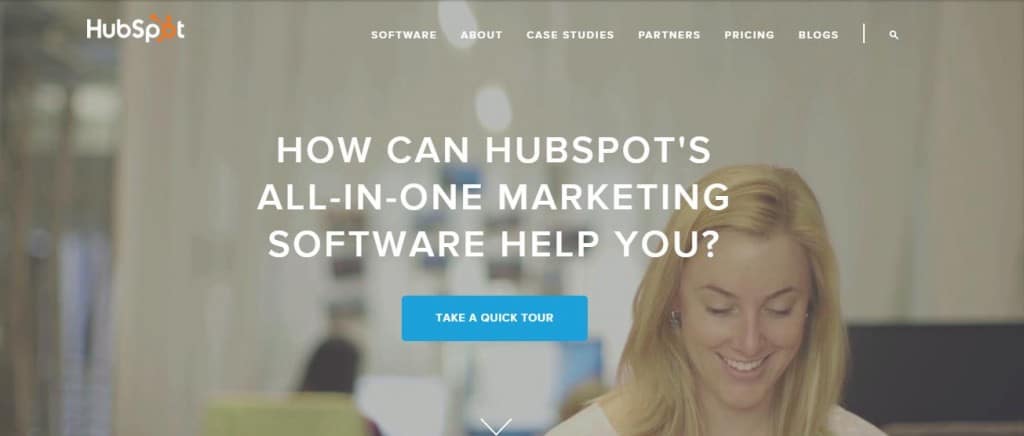
Hubspot is an automation tool that allows small businesses to compete with their larger counterparts. It provides you with many different types of data—page performance, social media information, website clicks, blog hits and any type of information you’re looking for can be gathered and reported by Hubspot.
Hubspot also has a calendar program that lets you create a centralized content calendar for all of your team members. You can easily see what social media content is scheduled to go out, when emails will be sent, what blog posts are being worked on and much more. It can be perfect for keeping all of your team members in the loop.
Zendesk.com
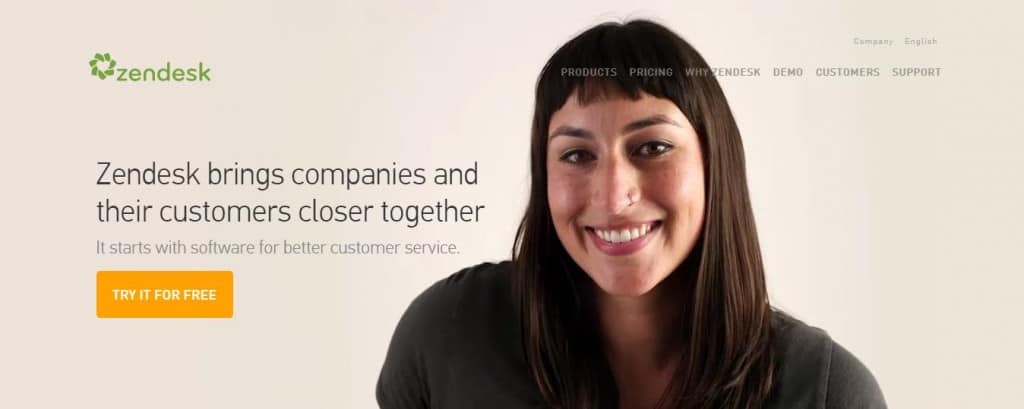
Zendesk is a customer service tool that allows you to maintain better relationships with customers, respond to questions quickly or view your engagement with them. This helps you determine if more or less communication is needed. It makes converting leads into customers quick and easy.
Rather than one set price per month, you pay per user. So you only really pay for the people who will be using the product. In some cases, this makes it much cheaper than the alternatives.
Intercom.io
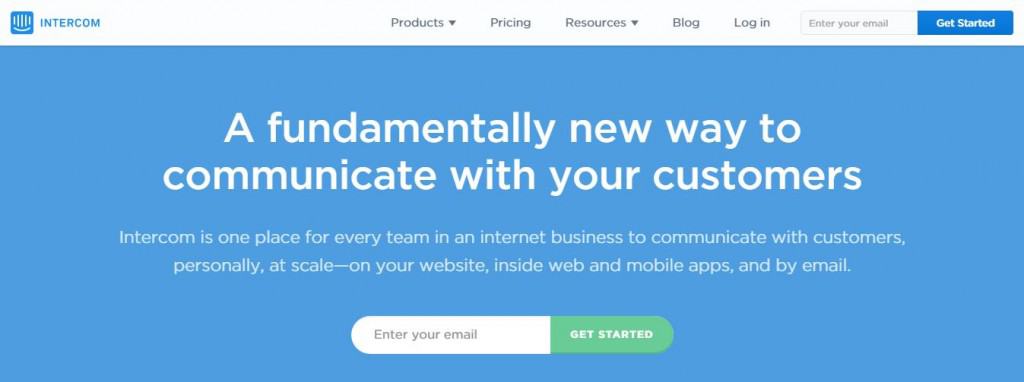
Intercom is another customer engagement application that focuses on dialogue and two-way communication. You can send emails and messages back and forth. You can also set up automated messages that are triggered based on your customer’s behavior or at specific times. This makes it very easy to engage customers and provide them with support when they need it, especially when they need that support in a timely manner.
Purechat
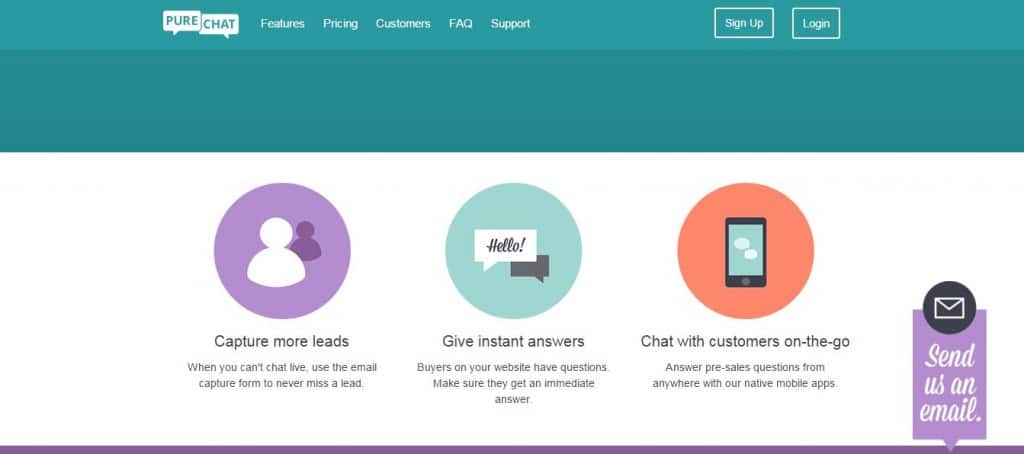
PureChat allows you to answer customer questions instantly. Many customers no longer appreciate the delay time that comes with emails, which is why more and more companies are going to an instant message type format like PureChat. In addition to offering a free version, PureChat also has a mobile app that allows both customers and employees to log in to the chat server at any time. PureChat is installed and integrated directly into your website, so it doesn’t even look like it’s an external program.
Mailchimp
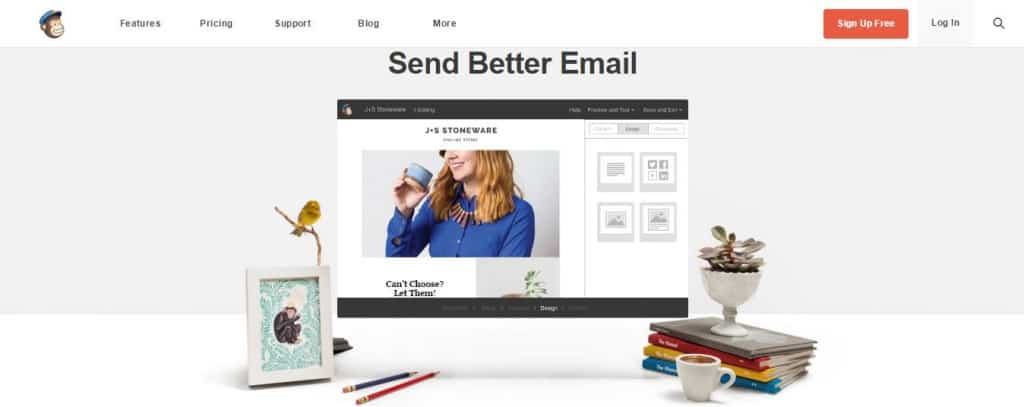
Mailchimp is a great way to manage your email marketing campaigns. It gives you a number of different email tools that:
- Create, manage and update contacts
- Create and use email templates and drafts
- Schedule emails
- Set up auto-replies
It also has tracking tools that help you see which emails had the best engagement so you can pinpoint what to work on. Mailchimp also has plugins that let it work with a number of other email programs.
Switch.co
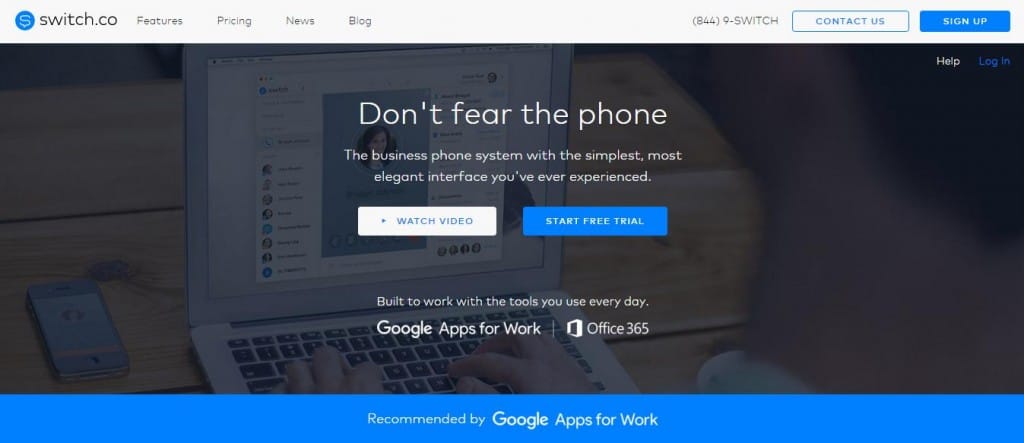
Switch.co is an online communication app specifically designed to replace traditional business phone systems. In this internet era, as everything is going cloud, why should your business phone systems be left behind. With a simple mechanism, your business phone number is routed through the internet and to the phone of your choice, so you can take your business calls at home, at the office or on your cell phone. Plus, it can save voicemails and do anything a regular phone can do. Just a working internet connection is required, that’s all.
Hootsuite
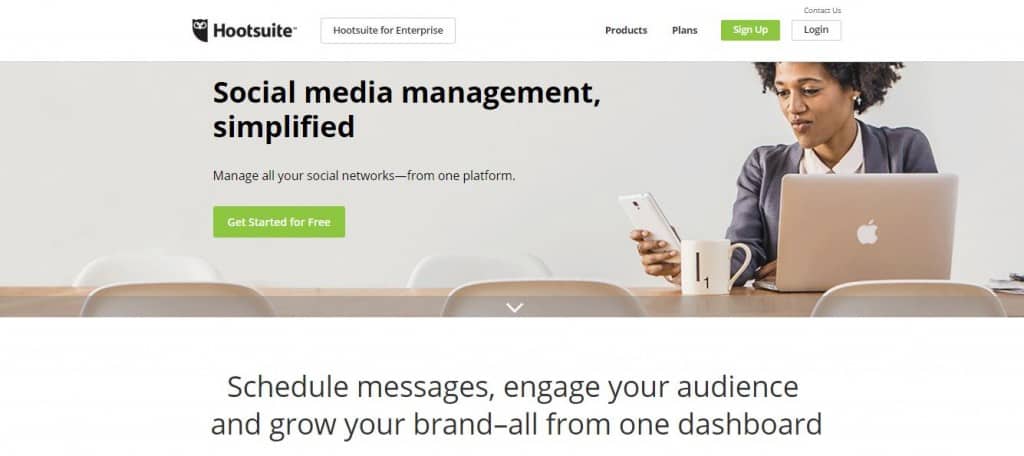
Hootsuite is one of the top social media apps because it allows you to create, send, reply to and manage all of your Twitter accounts. It has a very competitive and flexible pricing system, is very adaptable to almost any need, and can scale with your business as you grow. While it started out as a Twitter program, Hootsuite has expanded to include other social media sites. It can be used online, but there’s also a downloadable app that can be integrated with your desktop.
Outbrain
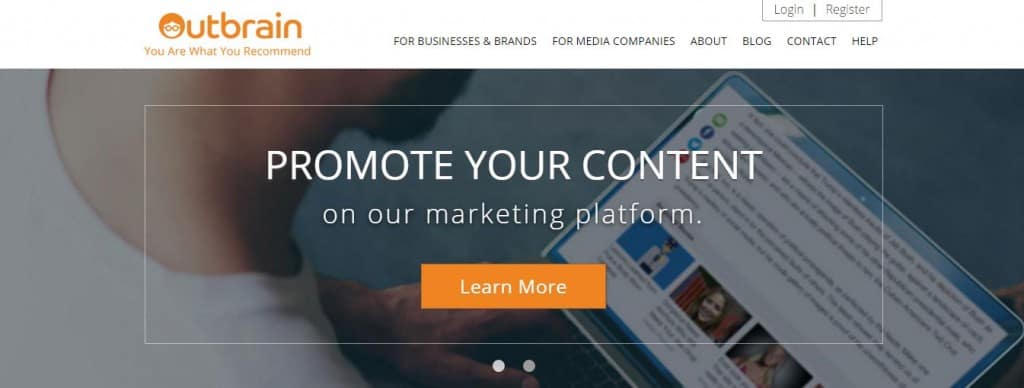
Outbrain is an advertising platform that is quick and easy to learn and use. You can set your budgets, push your content to a number of premium websites for recommendations, and much more. If you’re running multiple ad campaigns, Outbrain is a good way of keeping track of them all and making sure that you stay within budget.
Tweetdeck
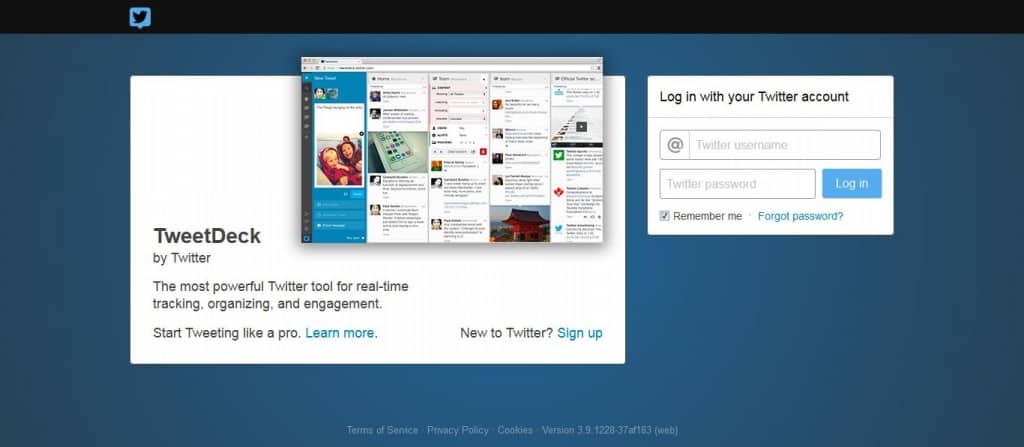
Tweetdeck is another app that was originally designed for Twitter. It allows you to search keywords and terms related to your brand. In addition to that, it allows you to set up scheduled Tweets and keeps you on top of retweets and mentions. Its ability to notify you whenever someone is Tweeting about your business, industry, or specific topics is a great tool for keeping up with the market.
Just a Few Great Tools
These are just nine of the many different tools out there to engage customers and bring in new ones. Whether it’s making it faster to write posts, letting you schedule emails weeks in advance or keeping you on budget, these apps are definitely worth checking out. Most of these apps have free demos, so it doesn’t hurt to try them out. They may not all be right for you; but you may find that several of them are tools you can’t live without.
Good backlinks are search engine gold, but when the spam starts to seep in, you’ll find your rankings begin to sink and your reputation will wane. So what can you do? Here’s how to recover when the reputation sappers strike.
Spotting the Spam
The first thing to remember when trying to filter out spam links that lead to your website is that SEO is a numbers game. While numbers matter when it comes to content rankings, not all numbers are created equal. Good links add value, boost your rankings and create revenue. However, bad links violate Google’s rules, and these are the most important rules to follow.
Google’s 2012 Penguin algorithm update placed an emphasis on quality over quantity and began to penalize sites tied to low-quality content that is a hindrance to web users. As the official post put it, these new rules would benefit sites that practice “white hat SEO methods instead of engaging in aggressive webspam tactics.” You need to wear a white hat.
Do Your Background Reading
Linking goes both ways. There is little you can do about other companies trying to sabotage your website by building your links into spam or porn websites. What you can do is avoid including connections to sketchy sites in your own writing.
The first thing to do, then, is to read the blacklists. There are a number of online resources that will let you know the who’s who of bad SEO practices. Check them thoroughly and eliminate any sites you find from your roster of link connections.
Check Other Problem Sources
If you’ve seen your reputation tank, but your link quality seems to hold up, then it’s time to look into other possible problems. Have you been writing duplicate content? Are your redirects not up to Google’s standards? Maybe you’ve even been hacked – it can happen to anyone. Any of these problems could be the source of your reputation problems.
When all else fails, you can even just pull the pages that have lost positive standing and start again. Then you have the opportunity to build new links that reflect a better image of your business. It can also be worth checking with Google to see what’s pulling you down so you don’t make the same mistakes again.
Know Your Score
Much like a credit score, Moz.com created a system that scores your spam link content on a range from 0 to 17. While it is still somewhat limited in function and more than a little difficult to use, the site crawler will ascribe a value to each site linked to you. Pursue those with a high spam value to remove the links and remedy your high site reputation.
Get Personal
Ditching the spam may be the first step to rebooting your content creation strategy, but that won’t be enough to demand attention from your prime audiences. No, the real key to high-quality content is getting personal. The more tailored your content approach, the more it will appeal to the reader.
Set clear goals, communicate directly yet informally, and approach with a sense of what you have to offer the recipient. Focus on the exchange and the intended outcome, and you’ll be headed for success.
It’s important to constantly watch your reputation reports and check your SEO rankings because the creation of internet backlinks can tank your position at a moment’s notice. Often it isn’t your fault, but remedying the situation is always your responsibility.
Be vigilant, check all your content and don’t be afraid to fight back when someone is dragging you down. Your reputation matters – don’t leave it to chance.
Kicking off a new year in business should always involve a moment of reflection, and content marketing is no different. Reflection is not just about saying, “we were up xx%,” it’s about the WHAT and the WHY. We are breaking down the top trends and takeaways from 2015 covering Publishers, Content, and Audiences.
The 2015 Trends below are based upon the RevResponse B2B Publisher Network that includes +5MM content requests annually.
Hello Publishers, Can I Have Your Autograph (or e-signature?)
As content marketing continues to grow, so do the pockets of Publishers…at least the Publishers that have jumped on board with the content marketing and monetization trains. The RevResponse Network of Publishers is reporting +18% annual revenue and +45% content request volume over 2014. So how are they doing it?
This year the highest revenue-driving tool for Publishers was EMAIL. The channel that some say is dying truly seems to be the most evergreen channel available today. +55% of revenue was driven by Publishers using Email Marketing to drive traffic and conversions; +17% year-over-year. Email Marketing includes RSS Newsletters, editorial-style newsletters, and standalone emails highlighting a single piece of content. By monetizing Email, Publishers are able to create a 1-to-1 personalized experience for their readers while also avoiding on-site ad blocking technology.
Takeaway: Email is not going anywhere. Publishers need to jump on the inbox train and monetize their mailings now.
Additionally, editorial styled posts and social media posts continued to drive a significant amount of volume for Publishers, with revenue increasing 30% year-over-year. This type of monetization is a great example of native advertising and is quite successful. Publishers that are excelling with these posts are embracing what native is all about – the audience. Targeted, customized, real-life editorial speaking to the interests of the reader wins every time….oh and by the way – this form of advertisement will not get taken down by the ad blockers either!
Takeaway: Native advertising will be a powerful tool in 2016, start simply by testing an editorial-style article post.
Is Content Still King? Yes, we’ll Agree.
As more Publishers, B2B, and B2C companies join the content marketing movement audiences are receiving an overwhelming amount of content, everywhere. This flood is putting pressure on content producers to perform. The NetLine Corporation digital research library, TradePub.com, featured over 4,000 pieces of content this year, including white papers, technical research, publications, eBooks, webinars, and training courses. We categorized the top 20 titles that trended this year with TradePub.com members; each of the titles were requested over 20,000 times, +6500% higher than the average:
Top Themes of 2015:
- 60% Professional Development / Self Improvement
- 40% Technology: Windows, Linux, Hacking, Web Security, Ubuntu
To get a better picture of this year’s trends, here are the Top 10 Titles requested in 2015:
- Creative Thinking for Dummies
- Linux Utilities Cookbook
- Mindhacker: 60 Tips, Tricks, and Games to Take Your Mind to the Next
- Never Apply for a Job Again!
- Ubuntu Linux Toolbox
- Reinventing Yourself: How to Become the Person You Always Wanted to Be
- The Database Hacker’s Handbook: Defending Database Servers
- Maximize Your Memory
- Work-Life Balance for Dummies eBook
- How to Make the Most of Your Workday
…And because we love listicles, more fun facts on titles this year:
- 20% of titles started with a number
- 8% of titles started with “How…”
- 5% of titles included “10”…“10 Ways, Top 10”
- 4% of titles included “New”
- 3% of titles included “Tips”
- < 1% of titles included “Don’t”
- < 1% of titles include “Shouldn’t”
This year content producers focused on teaching, guiding, and aiding readers in their research process. Very few titles used the FUD (fear, uncertainty, and doubt) or FOMO (fear of missing out) approach to push their content.
Takeaway: Audiences are looking to learn. Provide value, value, value! Professional development, guides, tips, how-tos are powerful themes for acquisition.
Alongside the digital content powerhouse, print publications continued to play a role in both the year’s bottom line and as an acquisition tool; popular publications include:
- Global Finance
- NASA Tech Briefs
- Total Retail
- Equipment World
- Dairy Foods
[xyz-ihs snippet="Agency-Link"]
Audience Trends
Now, let’s start a slow clap for AUDIENCES, without whom none of this would be possible. The reader, the customer, the user, the reason for waking up in the morning… But the question is “who are they?” What audience groups or demographics were trending in 2015 to drive all of the success and growth mentioned above?
To answer this question we applied the RevResponse Audience Intelligence Reports (AIR reports) to the entire Publisher Network data set for 2015 to measure the growth by audience demo:

Job Level / Professionals categorized their Job Level as:
+55% Manager Level and above
Company Industry/ Tech was a huge theme in content this year and the professional profiles match. Professionals categorized their employers’ industry as:
- 30% Computers and Technology (+50% year-over-year)
- 9% Manufacturing
- 8% Healthcare/Medical
- 7% Finance
- 6% Government
Job Area/ Professionals categorized their major job function as:
- 40% IT/Computers/Electronics (+30% year-over-year)
- 11% Executive (+20% year-over-year)
- 10% Engineering
Company Size/ Professionals categorized their company size as:
- +40% of professionals work at companies with 250+ employees
- +11% of professionals work at companies with 50,000+ employees
Country:
This year professionals from across the globe engaged with the Publishers and content within the RevResponse Publisher Network. As a matter of fact 99.9% of the world’s countries were represented in the Audience Geo list this year, 99.9%! To help you visualize the exposure, this map shows every country included in the RevResponse Audience Geo list this year, the legend showing the countries by request volume:
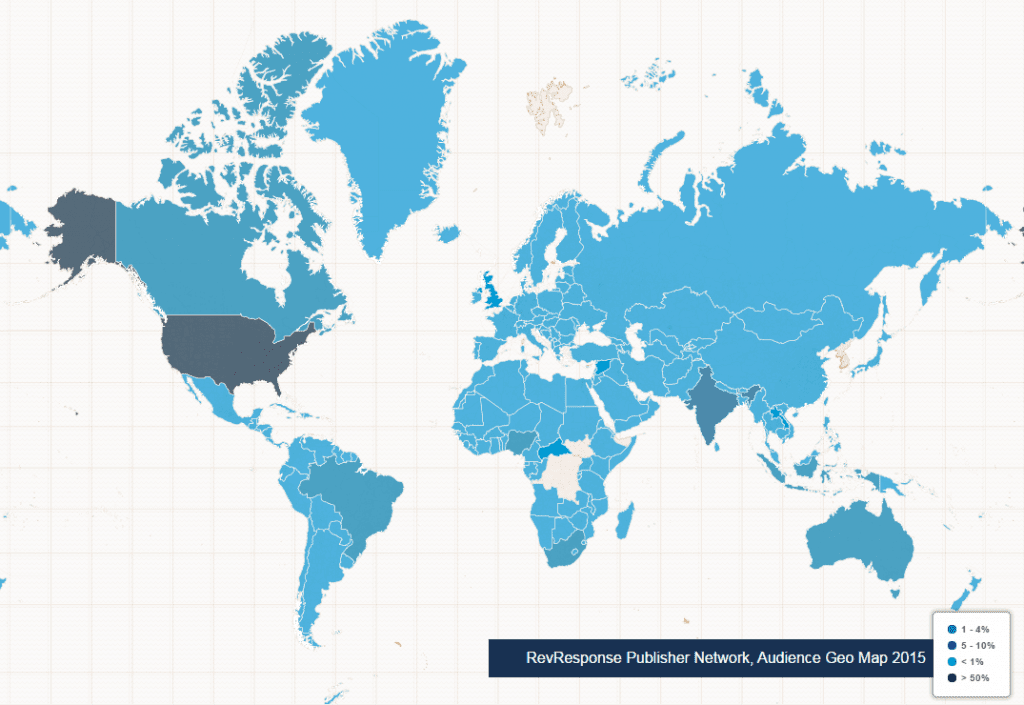
Takeaway: Decision-makers from the world’s top companies are looking for content online – help them find it by joining a Publisher Network with an impressive content database and platform.
2015 Reflection
Publishers had a huge opportunity in 2015 to take on content and maximize monetization efforts. The RevResponse Network took on the challenge and succeeded, increasing overall audience engagement by 30% year-over-year. The trends include winning strategies from the past (email) and newcomers taking over (native advertising). As you finalize your strategy for 2016 and determine where you want to focus PLEASE consider: content, email, and native advertising – but most of all focus on delivering value to your audience.
This article originally appeared on Business 2 Community.
Duplicate content is an SEO issue many SEOs or content marketers probably have experienced once a time in their daily routine. Content marketers who spend the time to create qualitative content strategies do not want to get penalized for duplication or near duplicates. In 2013, Matt Cutts stated that 25% of the web was duplicate content, you can find this number in the video at the end of the article.
Duplication refers to blocks of content that appear more than one time inside or outside a website or which are pretty similar. Duplicate content or near duplicates can lead to SEO penalties.
In fact, crawlers have trouble indexing the right content between different versions. Bots are then obliged to pick the content likely to be the best one, but it can lead to a loss of relevancy as it is not always simple to choose the right version. Moreover, bots will face difficulties to deliver the link metrics to the right page or share it between the different versions. Then, duplicate content also leads to the inability to rank the right version for a given query. At the end, you will face a drop in traffic.
The thing is, Google gives a lot of credits to user experience and focuses on delivering the best content possible to its audience. This is also why duplicate content is penalized.
While not all types of duplicate content can hurt your SEO, some of them need to be on the look out to avoid SEO penalties.
This article will cover:
- types of duplicate content
- how to deal with duplicate content
- tools to get rid of duplicate content
Types of Duplicate Content Leading to SEO Penalties
There are different types of duplicate content you should avoid.
Duplicate product forms
E-commerce websites often use manufacturer’s item descriptions to describe the products they sell. The problem is that those products are often sold to different e-commerce websites. Then, the same description appears on different websites and creates duplicate content.
Syndicated or copied content
Many bloggers use content, quotes or comments from other websites to illustrate their articles. There is nothing wrong with that if you link back to the original one. However, Google can still consider this as a duplication and will poorly value those pieces of content.
Sorting and multi-pages lists
Large e-commerce websites have filter and category options that generate unique URLs. Product pages can appear in different categories and be ordered differently depending on how the list is sorted. For instance, if you range 45 products by price or by alphabetical order, you will end up with two pages containing the same content, but with different URLs.
URL issues
Google considers URLs in www, http, https, .com and .com/index.html as different ones even if they point to identical pages and will evaluate them as duplicate content.
Session IDs
Session IDs issues refer to different session IDs stored in the same URL that are assigned to a visitor when he or she comes to the website.
Printer-friendly
Printable versions of content can lead to duplicate content issues when different versions of a page are indexed.
How to Avoid Duplicate Content?
There are different best practices to avoid duplicate content issues. The main solution with content located in different URLs is to canonicalize the original one. You can use a 301 redirect, a rel=canonical or parameters handling tool from Google Webmaster Central.
301 redirect
The 301 redirect is great for URL issues leading to duplications. It informs search engines which version of a page is the original and it links the duplications to that original one. Plus, when different well-ranked pages are linked to a single one, they are not in competition anymore and they create an overall stronger and more popular signal.
Rel=canonical
It works quite the same as 301 redirects, but it is easier to set up. That tag is located in the HTML head section of your web page and looks like this:
<link href="http://www.mywebsite.com/canonical-version-of-page/" rel="canonical" />
Then search engines know the above URL is a copy of the original one.
You can use it for content you integrated from other websites. It will inform search engines that you know the content is not from you and that the link metrics of that content should pass to the original one.
NoIndex, NoFollow
Use the noindex,nofollow meta tag to tell search engines not to index the content. Bots will be able to crawl the page, but won’t index it. Thus, you won’t be penalized for duplicate content.
Preferred domain
A quite simple operation is to set a preferred domain for search engines. It will inform whether a site must be displayed under ‘www’ or not in the SERPs.
Unique product description
As we said, product information on e-commerce websites can lead to duplicate content issues. Take the time to write unique ones or enrich your descriptions as it will help you rank above sites whose descriptions are duplicated.
What tools can help me to detect duplicate content?
In order to save time, you can use different qualitative tools to help you eradicate duplicate content. Here are three different ones, with some being totally free.
Siteliner
This tool detects any duplicate content on your website. You just need to add your website’s URL and it will draw a full report with your content performances.
OnCrawl
This onsite SEO semantic crawler also offers a duplicate and near duplicate detection feature. It shows you clusters of duplicates and near duplicates, types of duplication and clearly indicates which URLs are concerned.
The tool offers a 30 day-trial. If you want to enjoy all the functionalities, you just need to pick a plan and cancel your subscription before the end of the trial and you won’t pay anything.
Copyscape
Copyscape is a great partner because it detects duplicate content outside of your blog. You can thus easily know if someone has duplicated your content without your permission or without giving you credits.
[xyz-ihs snippet="Hubspot-CTA-Leaderboard"]
In today’s competitive advertising market, it is important to keep up with the trends and reach the maximum number of potential customers with equal ease. Two of the most popular kind of advertisements available are pay per click (PPC) and sponsored content.
Tackling the Terms: What Is PPC Advertising and Sponsored Content?
PPC (Pay Per Click) advertising is based on the number of clicks on a particular advertisement. In general, there is a pre-established contract between the publisher of the ad, such as websites and blogs, and the advertiser. Consumers of a particular website or service, upon clicking on the ad, inadvertently generate revenue.
Sponsored content on the other hand generally works on the basis of blog outreach and guest blogging. In this, a blogger or website editor publishes an article either authored by the blogger themselves, guest blogger or company. Generally, sponsored content is a more innocuous form of advertising because it depends on subtly influencing potential customers without distancing them with traditional advertising methods.
The Things No One Told You about PPC Advertising
There are several advantages to using PPC advertising, including but not limited to:
- PPC works on the basis of click-through rates, which is why Google AdWords, keyword incorporation, and direct adverts can all fall under this category.
- PPC campaigns can include both refined landing page systems and splitting of ad groups to maximize impact.
- PPC helps by narrowing down the target customers interested in a particular, often related, product or service.
However, the disadvantages of using PPC cannot be ignored either:
- PPC ads and anything which outright tries to sell an object tends to get cold-shoulders from more people.
- It can also be quite expensive for smaller businesses and startups to incorporate because there are extensive campaigns involved.
- There are multiple factors to take into account, including people’s general paranoia regarding sponsored advertisements.
What You Need to KnowAbout Sponsored Content
Sponsored content has many positive factors, including:
- Ability to merge in seamlessly with existing content on a site, allowing it to be a more natural way of advertising and grabbing additional attention.
- Sponsored content has the authentic stamp of approval from some trusted website or blogger, and this personal endorsement goes a long way.
- Social media sharing is also enabled through the use of sponsored content and thus generates a greater range of audiences.
There are very few disadvantages of sponsored content, but the primary concerns include:
- Concern over ethical issues is a big factor, primarily because brand influence on bloggers can often be perceived with suspicion.
- Uncertainty about articles followed by “paid” or “sponsored by” tags.
So What Should You Decide on Ultimately?
Comparing PPC and Sponsored Content with Google Analytics. It can be easy to see how some PPC advertising has higher bounce rates than sponsored content. On the other hand, they can provide a greater number of “impressions”, whereas sponsored content can get more shares. Overall, sponsored content can be a great opportunity for obtaining organic, native advertising, but PPC gives it some stiff competition.
Mariia Lvovych is an established guest blogger and entrepreneur, owner at GetReviewed.org brand new sponsored blog posts platform.
Marketing has changed significantly over the years due to digital and online advertising. We used to receive advertisement on “hard-copies” such as newspapers, magazine and pamphlets. Then came “soft-copies” such as emails, RSS Feeds, online yellow pages, but now it’s “smart-copies” such as search engines, social media and apps. Would it be enough for a business to only advertise in the newspaper or yellow pages in the 21st century?
With the emergence of these new platforms, businesses now have to play on these smart-grounds to keep themselves in the game. Properly marketing your brand on the right platform can be the key to success. With this in mind, I have listed three of the most important “smart-copies” of today that business should focus on.
Social Media – People are here!

Photo by Pixabay
It’s no doubt that many of us are spending much of our time – free and paid (yes, office hours too) on Facebook, Twitter, Pinterest etc. Many have become addicted and they aren’t even aware of it. A global user spends more than 20 minutes on Facebook on a daily basis while a US user spends more than 40 minutes. Thus, it is a great marketing platform to get your content and ads out there to potential consumers.
If you are able to provide researched information and quality content with tad-bit of humor to make readers smile, building a fan base can be less difficult. You can use free and paid marketing methods on Facebook, Twitter, and other social media platforms. With Facebook you can build a strong fan base that you can market your products or services to. Even your fans can share your posts on their timeline, helping your words reach a wider audience – all for free. With Facebook’s paid method, you can target Facebook users based on their gender, interests, demographics, and behavior—giving you an edge over other marketing platforms by targeting to the most applicable client in your market.
Don’t worry if you have a small marketing budget, as you can target limited users in your area and get your brand name out there. Play small, but play smart!
SEO – It’s actually content marketing!

Photo by Pixabay
The three letter word “SEO” can do wonders for your business if properly implemented. Although paid advertising is one of the quickest ways to get your brand marketed online, SEO can be a more effective and cheaper marketing method. SEO is all about getting your website ranked naturally in search engines, especially Google. The process includes on-page (content management, interlinking and website navigation) and off-page (creating backlinks and mentions) optimization.
A decade ago, we used to focus on meta tags, alt tags, keyword density, keyword diversity and header tags, but now, most of them have become useless as search engines have grown smart. The key to SEO success is well-researched content, good backlinks, proper linking structure, and easy navigation. Today, on-page optimization includes adding good, original and fresh content to the website. On the other hand, off-page optimization involves earning relevant backlinks to content through blogger outreach, which is one of the best ways to manage inbound link growth. You can seek the help of professional content marketing and/or blogger outreach agencies to do this for you. There are many other factors that affect rankings too, but these are some of the most important ones.
Some internet marketers feel that SEO is dying and we should not entirely focus on search engines as many users are diving straight to other sites bypassing search engines. For example, if a user wants to buy handmade jewelry, she might bypass Google and head directly to Etsy, a website and app specifically made for handmade products. But, do others know about Etsy? Most of us would still type “handmade jewelry” in Google, Chrome or Firefox. Also, many of the search engine results page (SERP) results are now dominated by big brands and local results. If SEO is done correctly, however, it can still turn the tables of a struggling marketing strategy.
Paid Advertising – It’s everywhere!

Photo by Pixabay
Paid advertising is one of the most effective and fastest ways of advertising online. More than 65% of Google’s revenue is from paid advertising. There are many types of paid advertising, but one of the most common methods is PPC, where you have to pay for each click a user makes on your ad. With more businesses going online bidding higher prices per click, the cost per click ratio continues to rise for many keywords. This can make it difficult for small businesses to compete with other players in the market. What it would have cost to get a user to your site a few years back was likely lower than what you have to pay now for the same keyword. So, one method some marketers use leans on PPC initially, but as organic traffic rises, use of this paid channels declines appropriately.
With the emergence of retargeting, the advertising model has evolved. Retargeting (or remarketing) is an advertising method in which a brand's ad is displayed repeatedly on other sites after a user leaves the brand's site. You might have visited the site ABC.com only once, but after several days you see ABC.com ads on other sites you visit. This tactic can be used by both small and large companies alike. It can be a good advertising method for creating brand awareness.
Whether you pay for advertising or try to rank on search engines, you need to always keep in mind that driving traffic to your website through any marketing channel isn’t necessarily the goal. However, converting that traffic into leads or sales is.
Converting the Cost of A Super Bowl Ad With Intel iQ Data
Super Bowl 50 signified a shot at the ultimate trophy in pro football for NFL fans and players. For brands, the big game embodied a chance to win over millions with a captivating 30-second television spot. The Super Bowl’s giant stage doesn’t come cheap. In 2016, a 30-second spot cost a record $5 million—up $500,000 from last year.
What $5 million can get in digital and social media marketing?
Yes, $5 million to run one television ad one time. Let that settle in. Additionally, that amount doesn’t include production costs. As a content marketer, I immediately think about how much $5 million can get a brand in digital media. Evidently, I’m not alone. This week, AdWeek and Digiday provided insightful examples using a $5 million valuation across digital advertising such as:
- Taking over the New York Times homepage for 16 days
- Generating 2.1 million app installs
- Driving 500 million Facebook video views
Analyzing the Cost of a Super Bowl Ad vs. Intel iQ Traffic & Email Sign Ups
The theoretical models from AdWeek and Digiday intrigued me to consider what $5 million would generate using actual Intel iQ data and averages. Here’s what I discovered using benchmark data for Facebook:
- Intel iQ Facebook cost-per-click (CPC) benchmark:$0.06 CPC
- The traffic from a $5 million spend on Facebook: 83 million clicks
Wow, that’s oodles of traffic. However, clicks are only a small piece of the sales funnel. What about lower funnel metrics such as leads and conversions? Here’s what $5 million would generate for iQ using email sign up conversion benchmarks.
- Intel benchmark for email sign up conversation rate: 1.8%
- iQ email subscribers from a $5 million Facebook spend: 1.5 million
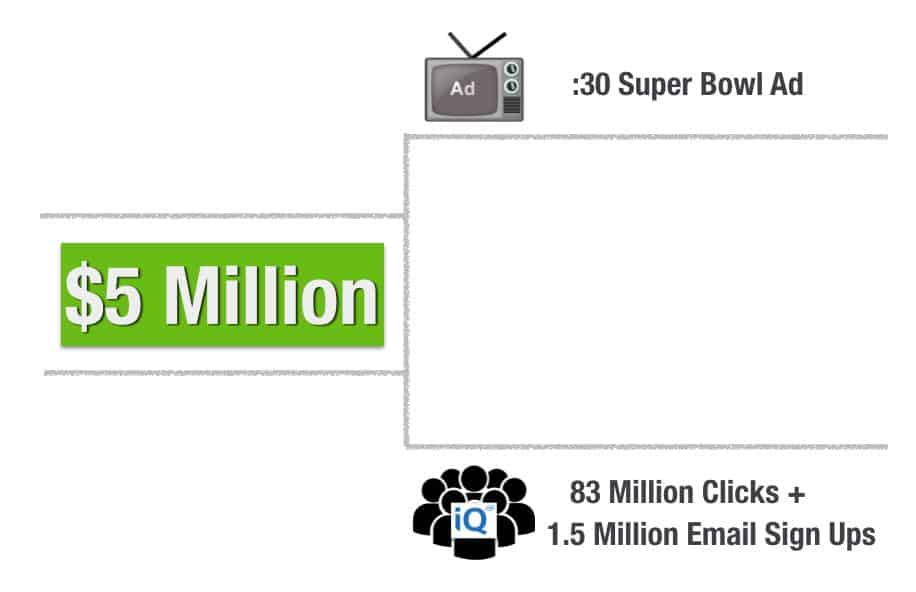
Whereas, clicks can be pinned as a surface level vanity metric, 1.5 million emails have enormous value for brands. Unlike Facebook fans or Twitter followers, where brands effectively rent audiences from platforms, a brand owns their email database. Email subscriptions hold supreme long-term potential and opportunities for reoccurring revenue. Just ask best in class brand publishers such as Kraft and RedBull about the results of owning millions of emails.
The Reach and Time Spent Argument
I can hear the network executive saying, “millions of clicks and emails are well in good, but a Super Bowl ad gets a brand the attention of mass audiences like nothing else.” Let’s evaluate the aggregate time from audiences that a Super Bowl advertiser is getting with a television ad. In 2015, 114 million viewers tuned in for Super Bowl 49 (graph below).
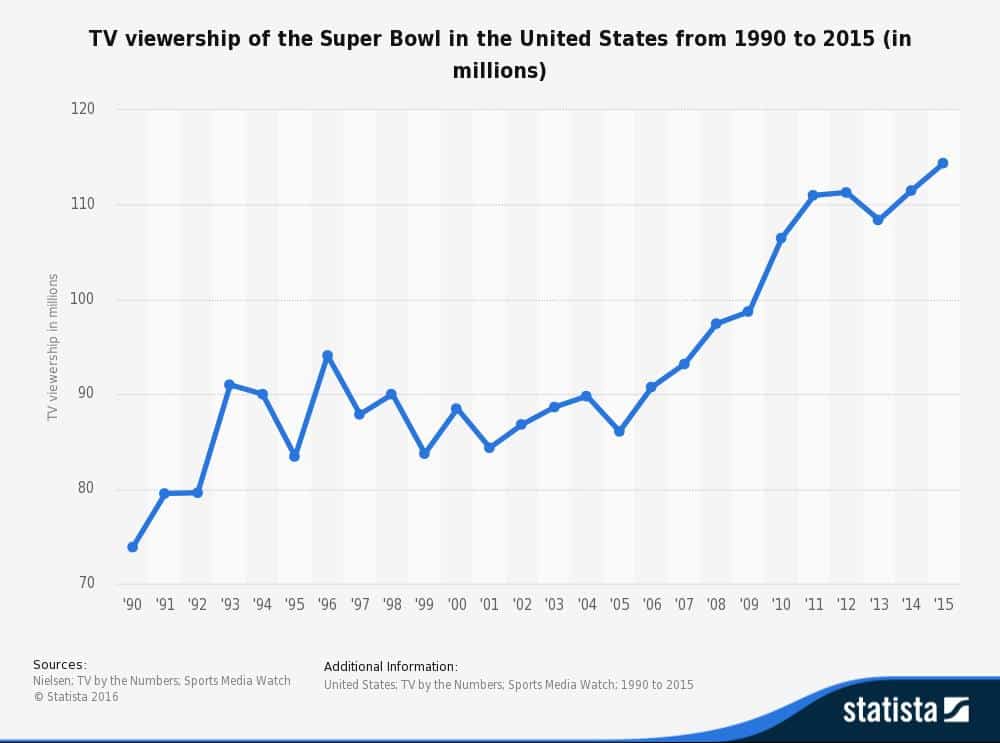
Now, let’s assume every one of those 114 million people saw a brand’s 30-second spot, which of course is near-impossible. However, let’s go with it and calculate the aggregate minutes that the 2015 super bowl audience would spend with a single 30-second ad:

Using the same aggregate time spent methodology, let’s use the average time spent of 02:31 minutes on Intel iQ articles and combine it with the estimated 83 million clicks from the above analysis. Here’s how many aggregate minutes that would be generated on Intel iQ from a $5 million Facebook spend.
Measuring Audience Attention vs. Viewers and Reach
No doubt 114 million viewers represent a big opportunity for brands to reach mass audiences. Yet, iQ content would generate over 3.5 times more aggregate attention minutes than a Super Bowl ad ever could. We can argue about the value of time spent, but it’s difficult to dispute that more of an audience’s time with your brand is not valuable. At Intel, we’ve found a direct correlation between higher time spent with iQ content and the propensity for a user to share iQ content and return to the site.
4 Takeaways For Content Marketers That I’ve Learned From This Exercise
Most of us can only dream of overseeing a $5 million budget for a Super Bowl ad, but every content marketer can think more strategically about how we manage our investments.
- Impact Over Reach
Ze Frank, President of BuzzFeed Motion Pictures said it best, “As an industry, we’re over-indexed on measuring reach and we’re under-indexed on measuring impact.” Don’t default to simple reach metrics. Think about how ad dollars can pay off a specific and measurable objective - something besides impressions with zeros. - Play the Long Game
I’ve learned that content marketing is a marathon, not a sprint. It took iQ nearly three years to hit 2 million monthly visitors. Get rid of the short-term campaign and checkbox attitude. Instead, consider the value of investments two - three years from now. Will there be lasting impact or just another YouTube video with 200 views? - Challenge the Status Quo
While it may be easy to play it safe - don’t do it! Take a stand against antiquated marketing and advertising. Innovation requires content marketers to be critical thinkers and change agents. - Think Big!
When pushing innovation, don’t be afraid to swing for the fence. For example, using the above $5 million scenario, a brand could buy a major media property (say Re/Code) for the same cost ($15 million) as three Super Bowl ads. While many may see this idea as absurd, it’s this kind of thinking that can produce home runs.
Luke Kintigh is a global media and content strategist at Intel. Recognized as a Rising Star in Content Marketing by the Guardian, and member the Top 100 Content Marketing Influencers by Onalytica, Luke speaks at prominent content marketing conferences and regularly contributes to industry publications such as Business2Community, Relevance, and the NativeAdvertising.com.




